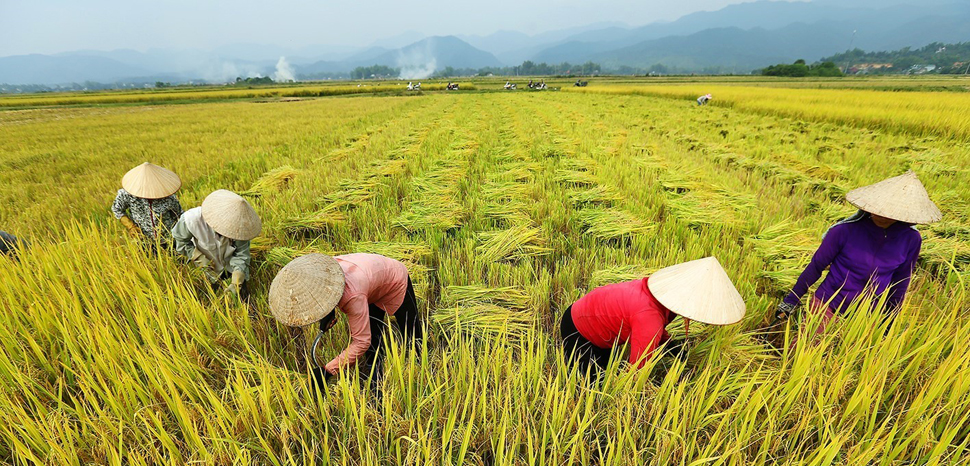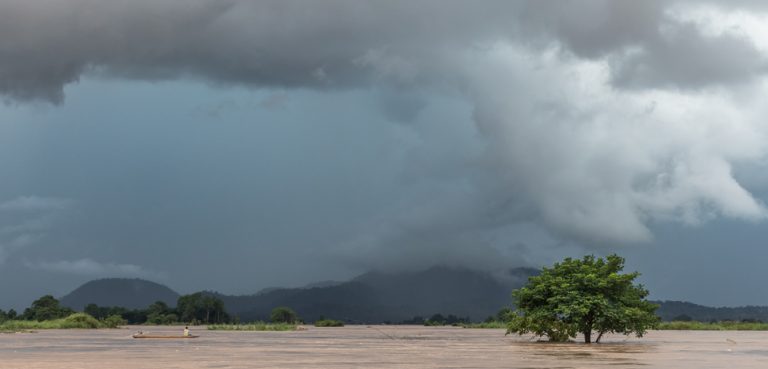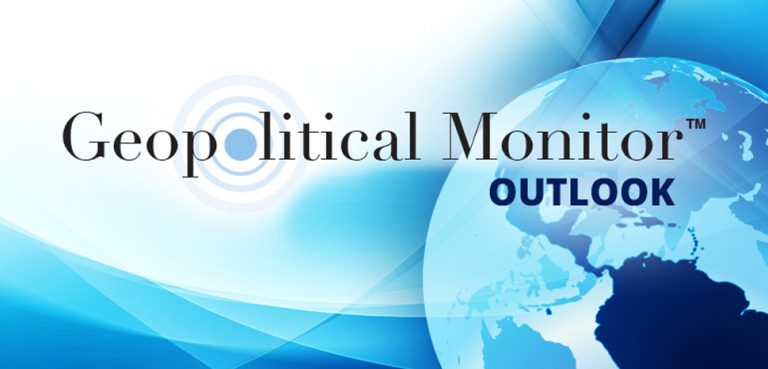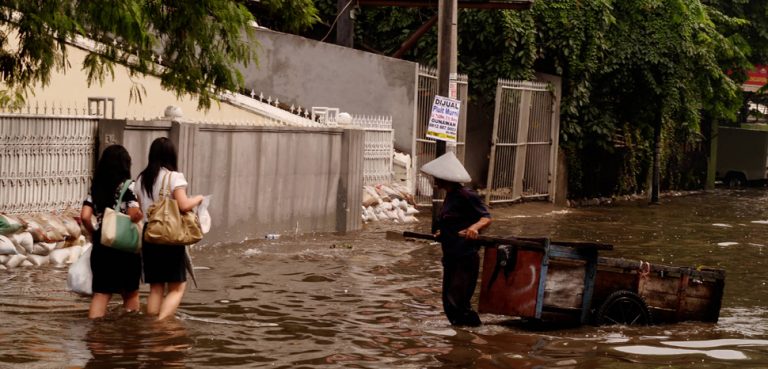In Vietnam’s Mekong delta, getting rice from a sticky mud field to bowl, isn’t a simple process. In spite of the idyllic postcard images of a child on the back of the water buffalo or the stooped and smiling women in coned-shaped hats planting rice, the future for these farmers will require the adoption of digital technologies to meet the challenges of climate change.
The arrival of 4.0 smart agriculture in Vietnam signals the end of an exclusive dependence on water, fertilizers, and pesticides. Instead, farmers will use the smallest amounts necessary, all the while accessing data, GPS technology and moisture sensors to break down traditional challenges to crop selection, market access, and innovation.
Smart agriculture is critically needed in the Mekong Delta which is the heart of a region that cultivates over 1,600 varieties of rice at a convergence of water, boats, houses, and markets supporting 18 million residents.
Although rice has played a central role in the lives of the Vietnamese for several thousand years, their rice bowl is at a tipping point since farmers need all the available tools from traditional plows attached to water buffalo, rice harvesters and the latest smartphone agri-apps to help them and their crops survive.
In the 1980s, Vietnam was a hungry nation. Over the past three decades of renovation or Doi Moi, reforms have changed the socio-economic landscape. The shift away from collectivization to individual land ownership elevated the productivity of agricultural production and reduced poverty. Because of the agricultural market liberalization, rice exports from Vietnam, the world’s third-largest shipper of the grain, rose 4.2% in 2019 with revenue from rice exports at nearly $2.8 billion.
But the vectors of climate change, industrialization, drought, diminishing fresh water supply, pollution, sea level rise are creating a perfect storm damaging sustainable agriculture development. In response, the government is examining a policy shift away or restructuring of their staple rice production to other crops since the rice sector is at risk and cannot ensure economic efficiency.
“Climate change has made natural disasters, especially typhoons, floods and droughts more severe. Due to negative effects of climate change, it is necessary to have (scientific) assessments of the vulnerability of natural resources and the coastal environment,” claims Nguyen Hoang So, a geographer at Hue University.
Vietnam’s growth model achieved at all costs has come at the expense of the environment. The consequences of agricultural success have ranged from deforestation, mangrove and fishery resource depletion to a growing incidence of land degradation and water pollution associated with wide use of fertilizers and pesticides.
A Wharton Public Policy study warns Vietnam that because of climate change, sea level rise and a decrease in agricultural land, that there’s an urgent need for high-tech and climate smart agriculture (CSA). The study underscores that the current trajectory of industrial levels of fertilizer use and other agro-chemicals are not sustainable.
“The overall aim of CSA is to support efforts from the local to global levels for sustainably using agricultural systems to achieve food and nutrition security for all people at all times, integrating necessary adaptation and capturing potential mitigation,” says Leslie Lipper, senior environment and climate change consultant at the International Fund for Agricultural Development (IFAD).
As a result, the government has taken steps in promoting high-tech agriculture with its $4.4 billion credit line for high-tech agriculture projects, but so far too many small farmers remain reluctant to adopt the newest downloadable apps for improving their farming practices.
“Almost all the farmers I have met don’t use smart phones for agriculture-related purposes. The fact is that farmers are using smartphones mostly for communication and entertainment. The trend is changing but I still observe that farmers are not considering the smartphone as a production tool,” claims Truong Nguyen, a former Participatory Research Specialist at the International Center for Tropical Agriculture (CIAT).
New initiatives like Agro-climate Information Services (ACIS), directed at women and ethnic minority farmers in Southeast Asia, AloWeather (sms text), Green Coffee in Vietnam, and Specialize Expert System for Agro-Meteorological Early Warning (RIMES-SESAME) in Cambodia and Myanmar have experienced modest success but offer promise in the future.
In neighboring Laos PDR, climate information is digitally available to the farmers through a program, Strengthening Agri-climate Monitoring and Information Systems (SAMIS), where technicians develop weekly weather bulletins with agro-advisories and share it with farmers through a combination of community loud speaker systems and digital delivery by WhatsApp.
In the Mekong delta, farmers are collecting a vast amount of data and use inexpensive small processors to make use of science-based information and to control equipment or monitor animals with it. Their smartphones offer connectivity to the agricultural weather data, and access to order spare mechanical parts or detailed market information on competition between food crops and bio-energy crops.
Because of training and support from Google volunteers, Nguyen Thi Tam, uses her smartphone to access weather information for her farming forecasts. A Google grant and cooperation with the Vietnam Farmer’s Union (VNFU) has proven instrumental in delivering a pilot program in digital skills training to at least 30,000 farmers.
Additionally, Google provides digital training via a Digital Bus, traveling to 59 provinces in remote rural areas. The multinational’s Primer app offers fast and accessible ways to learn digital marketing skills and is free.
The Vietnam Farmer’s Union (VFU) recognizes the contribution and importance of agricultural production for the future of the nation. It’s now upgrading and implementing technical training for young farmers and provides priority vocational training for them and access to low interest loans.
“While most Vietnamese rice farmers still use their own traditional cultivation experiences, more are starting to adopt digital technology and data-driven innovations,” says Dr. Ngo Duc Minh from the CGIAR Program of Climate Change, Agriculture, and Food Security (CCAFS) and an advocate for organic fertilizer production.
Agriculture enterprises remain active in applying innovative solutions for leading farmers toward digitalization in Vietnam. For example, Presence Nutrition, a free mobile app developed by French feed company Neovia, offers up-to-date market information for farmers and is recognized as an expert source of knowledge about animal nutrition.
Launched two years ago, it has been downloaded 10,000 times by Vietnamese farmers. With an easy-to-use interface, the app is a useful tool for farmers to check daily prices in livestock markets, be alerted about local diseases, receive local weather forecasts, and find nutritional information needed for each type of animal.
Other technologies including one directed to shrimp farming have also been introduced in Vietnam. Biosipec offers a new way to farm shrimp. “The Vietnamese are very traditional in the way they produce shrimp but the situation is evolving and they are beginning to accept some aspects of the innovative shrimp farming applications, since it reduces risks and environmental impact,” says Thomas Raynaud, marketing technical aquaculture director of Neovia Vietnam.
High-tech apps in farming are seen as an essential move by agricultural enterprises in Vietnam, especially by large concerns that have invested heavily in digital farming in order to create a digitalized agriculture supply chain, minimize costs, and enhance productivity. Sat4Rice, a technology-based predictive data system, developed by a Netherlands-based company, Nelen & Schuurmans, is working with a Vietnamese partner, Loc Troi Group to help Mekong delta rice farmers respond to rice cultivation issues.
“Drought issues have been extremely harsh in the Mekong delta and this makes agricultural advice more important than ever. In contrast to the general perception, smartphone use is mainstream in the region, and farmers are more eager to use it for support in farming,” says Alexander Hoff, Business Manager for Water & Agriculture. He admits that there remain some challenges surrounding gathered data entries by farmers but that a final report is due to be released next month on the overall implementation of the system.
In addition, GMA, a green app developer, focuses on building up software solutions to solve the problem of information and communication between farmers and local authorities and has been widely used in An Giang province with over 20,000 monthly users.
There are Asia-wide initiatives that call attention to stewardship of the farmland and helping farmers choose alternatives to reduce or optimize the prevalent use of pesticide. This includes the adoption of CropLife Asia and a new Vietnamese app, Thuoc BVTV, that brings data and information directly to the farmers’ smartphones so that they can identify the least toxic pest control methods for their crops.
Vietnam is and remains an agriculture nation. Policy planners are concerned about climate change in the Mekong Delta and they have urgently called for a shift from basic farming to more efficient, sustainable, and productive farming. With the fast-changing landscape, the agriculture and food industry is under pressure to adapt and evolve to meet consumers demand.
The government recognizes that unsustainable agricultural practices and the excessive use of agrochemicals is rejected by global consumers because of food safety. As a result, the Ministry of Agriculture and Rural Development in Vietnam, (MARD) has corrected its policy from quantity to quality in farming practices.
Vo Van Tieng, a young farmer, understood this change in high quality sustainable food and has pioneered a successful organics farm in Dong Thap province. With his smartphone in hand, available apps and an active Facebook account, he posts and receives information about the new Green Economy and his pesticide-free crops.
In Vietnam the certified organic farming area has expanded over the past five years or so with organic market revenue estimated to be at $132.15 million a year. Most Vietnamese certified organic products are exported to international markets but there’s also an increase among the nation’s rising middle class. This explains why Naturally Vietnam was created as a platform that identifies traceable food products from at least six farms.
Currently, 70 percent of Vietnam’s population of 98 million is under 35 years of age and there is an emerging middle class—accounting for 13 percent of the population but expected to reach 26 percent by 2026.
The Boston Consulting Group reports that Vietnam has the fastest growing middle- class population in Southeast Asia and with that growth is increased consumption, especially among the youth, for quality food. Over the past quarter of a century the shift from subsistence to consumption lifestyles has been dramatic.
To feed Vietnam’s population, more than 70 per cent of Vietnam’s agricultural products come from more than 22 million smallholder farmers, so the local agri-business should not depend on major corporations only to promote innovative tech solutions. Solutions must also be identified for smallholder farmers to apply technology.
The demographics suggests it may take more than available smart farming digital tools to keep young people on the farms. These sons and daughters have seen the often thankless, risky and back-breaking sacrifices their parents and grandparents have made in their hardscrabble lives.
Yet, the Ministry of Education and Training along with the Agricultural Ministry, knows all too well, that boosting the adoption of new technologies for agriculture to farmers both young and old, is a necessity for the nation’s future.
Vietnam’s push for high-tech farming innovations has its challenges, but there’s recognition that solutions for food security, crop quality, and sustainability can only be found in 4.0 agriculture. Programs like “Youth Spark Digital Inclusion,” pioneered by Microsoft Vietnam and Vietnet Information Technology, are closing technology gaps, by offering rural youth opportunities to pursue smart farming practices in a digitally-driven agri-food system.




